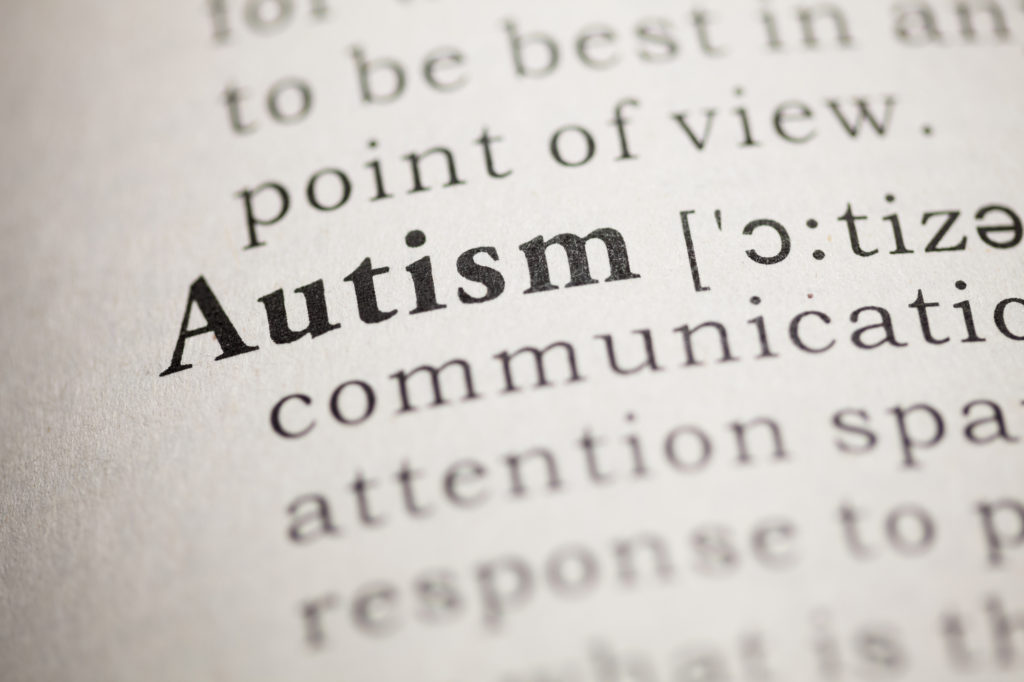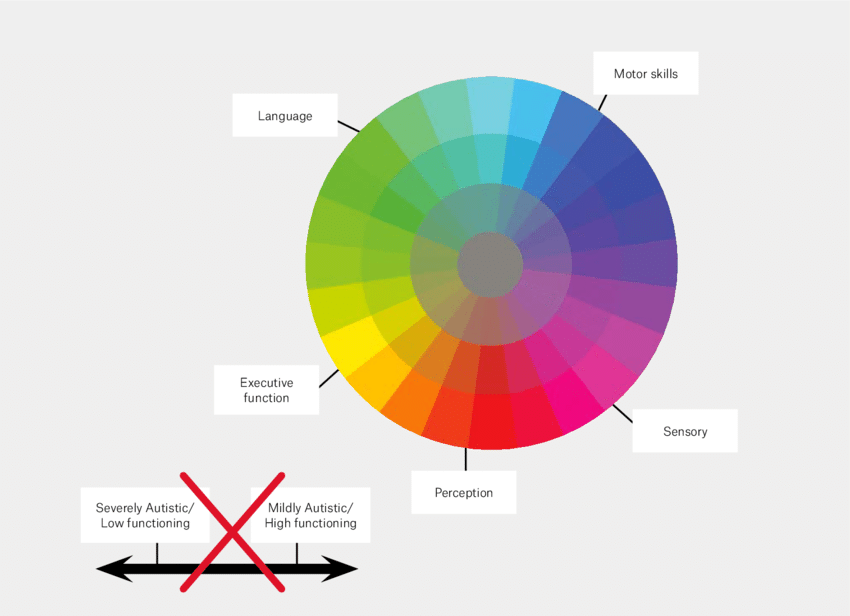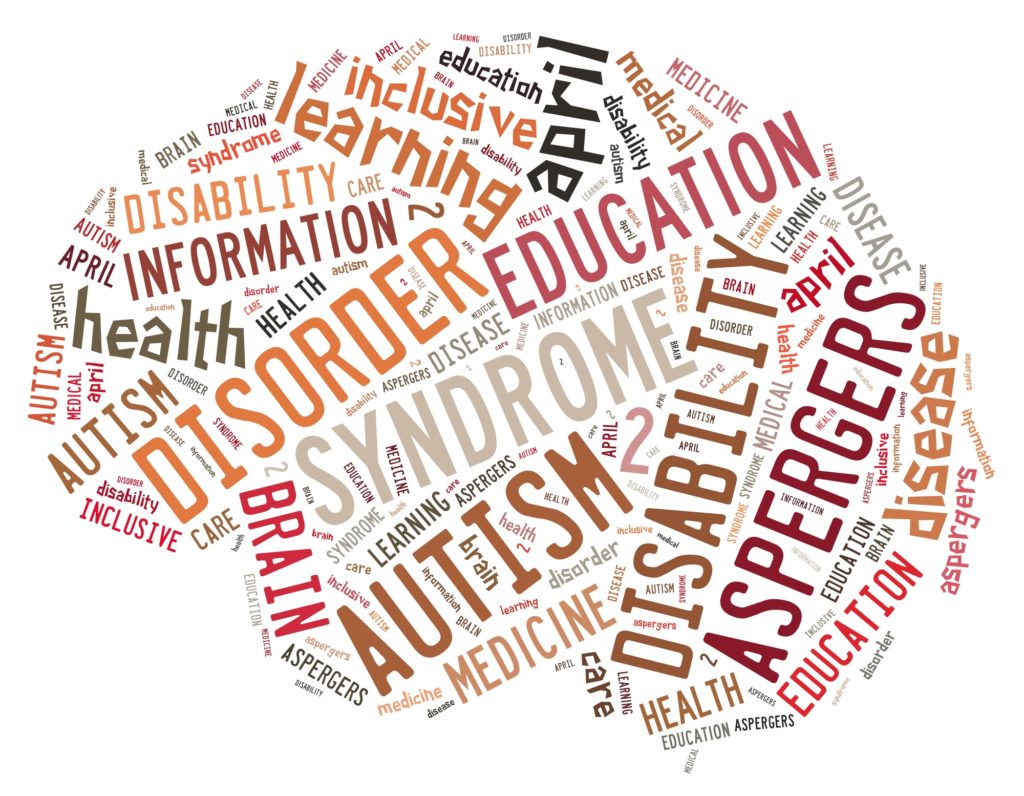
What exactly is Autism Spectrum Disorder, or ASD? Contrary to what most people have been led to believe, Autism is not something that only young boys get. In fact, it isn’t something that you can “get”, it’s a brain neurotype that you are born with, it can happen to anyone of any gender, and you don’t grow out of it as you get older. I’m a nearly 50-year old woman, and I was recently diagnosed with Autism Spectrum Disorder.
Audio/podcast version:
First off, let me begin with some definitions.
“Autistic” comes from the Greek word “Autos” which means “self”. Another name for this is “Neurodivergent” (although not all neurodivergent people are Autistic.) Autistic people focus on the self their internal world.
“Allistic” comes from the Greek word “Allos” which means “other”. Allistics are people who are not Autistic. Another name for them is Neurotypical. Their focus is on others and the outside world.
This chart from Embrace-Autism.com shows how these overlap.

Table of Contents
Most Important Facts About Autism/ASD
ASD is a cluster of traits that vary with each individual. Many people mistakenly think the Autism spectrum goes from mild to severe, meaning those on the mild end only show a few symptoms and those on the severe end show a lot of symptoms. In reality, there are different categories of traits that encompass the spectrum, and people will show different sets of traits in different categories. In other words, every Autistic person is uniquely different although the majority of them share many commonalities. The following chart from the website Researchgate.net shows the wrong way and the right way to look at this spectrum.

Autistic brains are not broken, they’re just different. Many Autistic people feel like they are broken in some way, but this myth is just perpetuated by the majority of people who have neurotypical brains and the society we live in which conforms to the majority. Neurodivergent brains simply operate differently. This makes Autistic people appear “strange”, or “weird” simply because they are in the minority. Not fitting into society only makes them appear more “broken”.
ASD is not an illness or disease, therefore it cannot be cured. This has been a controversial subject, with many people claiming Autism is caused by something in the child’s external environment after they are born. In reality, it is a neurological developmental condition, meaning the brain develops in utero to be this way from birth. It is no different than people having different personalities, or some people being left-handed.
ASD is considered a disability by the American Disabilities Act. By getting a diagnosis, a child is able to receive support to help them navigate life easier. This is ideal, but unfortunately many Autistics slip through the cracks and live much of their lives undiagnosed (as was the case with me.) Anyone with Autism is legally entitled to reasonable accommodations in school or the workplace which can be helpful.
Girls and women are unfortunately under-diagnosed. This is due to the criteria for ASD being created with young boys in mind. Boys present Autism traits differently than girls, generally. Girls also tend to fit in better with Neurotypical people through the use of masking, which is another name for suppressing Autistic traits and pretending to be “normal”. This, however, can lead to anxiety, depression, and burn out if it goes on for too long. The good news is that more and more adult women are now being diagnosed as Autism awareness becomes more widespread.
People on the Autism spectrum often have other co-existing mental health conditions. Autism goes hand in hand with a variety of other mental health disorders, including ADHD, Anxiety Disorder, Depression, PTSD, Delayed Sleep Phase Syndrome, Tourette’s Syndrome, Bipolar Personality Disorder, Obsessive-Compulsive Disorder, and others. Often, living with undiagnosed Autism causes anxiety, depression, and PTSD, as it can be a trauma in itself to go through life being treated differently without knowing why. This leads to masking, which as I mentioned earlier, is detrimental to the well-being of the Autistic person. Masking seems necessary in the short-term, however, to cut down on bullying and teasing which happens to many Autistic children.
Common Autistic Traits

While there are too many specific traits for me to go into here, I will break it down into the most common main categories and give a few examples of each.
The main categories of traits are:
- Social Difficulties
- Information Processing
- Sensory Processing
- Executive Dysfunction
- Fine Motor Skills
- Repetitive Behaviors
- Communication Difficulties
- Special Interests
- Developmental Delays
Examples of Social Difficulties:
- Struggling to make and maintain friendships
- Preferring to be alone rather than with others
- Not feeling comfortable in large crowds or events
- Not feeling comfortable speaking in a group
- Not feeling comfortable in group sports or activities
- May avoid intimacy
Examples of Information Processing Differences:
- Black and white thinking (as opposed to flexible thinking)
- Being overwhelmed by lots of information
- Noticing details that others don’t
- Needing time to process information before responding
Examples of Sensory Processing Difficulties:
- Hypersensitive to bright lights
- Hypersensitive to loud noise
- Hypersensitive to certain smells, tastes, or textures of food or fabrics
- Hyposensitivity which is the opposite of hypersensitivity (needing constant stimulation)
- Needing lots of down time alone to recharge after being around others or being exposed to overstimulating environments.
Examples of Executive Dysfunction:
- Difficulty keeping up with personal hygiene
- Difficulty with cleaning and organization
- Difficulty taking care of one’s health
- Difficulty making appointments
- Chronic tardiness (on the flip side, some Autistics become extra time-sensitive making them early for everything)
- Struggles with finding and keeping employment
Examples of Fine Motor Skills/Physical Body Issues:
- Trouble with handwriting
- Trouble with tying shoes
- Clumsiness
- Difficulty walking in a smooth rhythmic way
- Difficulty playing sports
- Difficulty keeping your balance
Examples of Repetitive Behaviors:
- Stimming (self-stimulation such as rubbing fingers together, rocking back and forth or side to side, picking at skin, twirling hair, biting lips or cheeks, etc.)
- Repeating words or phrases
- Repetitive body part movements like hand flapping (similar to stimming)
- Repetitive daily routines (changes to these routines often cause upset)
Examples of Communication Difficulties:
- Missed social cues
- Misunderstandings due to different styles of communication and information processing
- Many Autistics prefer written communication as opposed to verbal, some cannot do verbal at all or will go mute in stressful situations
- Many Autistics get perceived as “cold” due to lack of emotional skills
- Autistic people tend to be bluntly honest to the point of appearing “rude” to others
- Tendency to be quiet unless talking about a subject they are passionate about
- Over-explaining due to past misunderstandings
Examples of Special Interests
- Obsessions with a topic to the point of it taking over their life (can also be obsessed with other people)
- Compulsion to learn every single detail about a special interest
- Prone to info-dumping onto others about their favorite subjects
- Lack of interest in other topics (narrow focus only on special interests)
Examples of Developmental Delays:
- May live at home well into adulthood
- May be slower to start dating
- May take longer to learn things like riding a bike or tying shoes
Do You Suspect You Might Be Autistic?
If you want to explore this subject further, there are many ways to get more information. You can start by taking some online assessments; keep in mind, however, that these tests are not designed to diagnose, only to help you learn about yourself to see if you might want to pursue a formal diagnosis. You can search for “Autism tests” and find others but the RAADS-R test is a great place to start:
There are also some great books out there to help you learn about Autism. The best one I have read (which was also recommended to me by the psychologist who tested me) is Unmasking Autism by Devon Price. (Affiliate link)
The Next Step: Getting a Diagnosis
After you have researched enough to suspect that you have Autism, you can pursue an official diagnosis. Keep in mind that a diagnosis may be difficult to get and costly if your insurance doesn’t cover it (up to $5000 I have heard). The waiting list for many testing facilities can be over 2 years long.
The next step, if you wish to proceed, is to get a referral from a mental health practitioner. If you are already in therapy, they should be able to help you. If you are not currently in therapy, it might be a good idea to start. Many people avoid mental health services simply because they don’t think they are necessary, but I firmly believe everyone should try therapy at least once if your insurance covers it or if you have the cash to pay out-of-pocket.
Pros and Cons of Getting an Autism Diagnosis
Since I have firsthand experience with this, I want to share my perspective. As an adult, getting a diagnosis is a personal choice, and your reason(s) for getting one might vary.
Pros
Your whole life will finally make sense. This is a common sentiment among late-diagnosed Autistics and a diagnosis like a relief to many of them. We always knew we were different but didn’t know why. Once you have a name for it, all the pieces will fall into place. The more you learn about Autism, the more a-ha moments you will have that explain everything about your life.
You will be entitled to reasonable accommodations at your job. With a diagnosis, you’ll be able to ask your job to work with you to make your experience better. This will help you become a better employee. For example, you might be allowed to wear noise-canceling headphones, or have the lights dimmed at your work station, or have your hours reduced to suit your needs.
You will be able to tell others why you are the way you are. If you choose to disclose your diagnosis to those in your life, you can help them better understand you. A big part of why Autism causes so many struggles is because others don’t understand and judge you based on false information. You can educate them which will help everyone involved to avoid misunderstandings.
You might be able to get on disability if you wish. While there are separate pros and cons to getting on disability, the possibility is there if you need it. It might be difficult to get accepted, but many people have been successful. The area of work is a huge problem for many Autistics so this might be a viable option for you if you struggle excessively. This website can give you all the information you need to learn more.
Cons
Others might not treat you any better. Unfortunately, this isn’t a guarantee that others will accept you, but it will weed out the ones that are likely harmful to have in your life. People might talk down to you, treat you like a child, say things like “But you don’t look Autistic!” or simply not know how to act around you. This is a risk you’ll have to decide on taking or not, with each person in your life.
It’s expensive and time intensive. Unless you have insurance that will cover the costs, it can be up to $5000 for an evaluation. Most testing facilities have a 2+ year long waiting list to get assessed. The process usually involves at least 3 sessions with a few weeks between each session. This, of course, will vary on what country or state you live in, but it seems to be the norm.
In Conclusion
1 out of 44 kids (as of 2022) have Autism and more adults are getting diagnosed every day which means we need awareness to spread if we want to live in a world where everyone is accepted and understood. By sharing the facts not spreading the lies, we can all live harmoniously together despite our neurological differences.

49 Comments
Comments are closed.